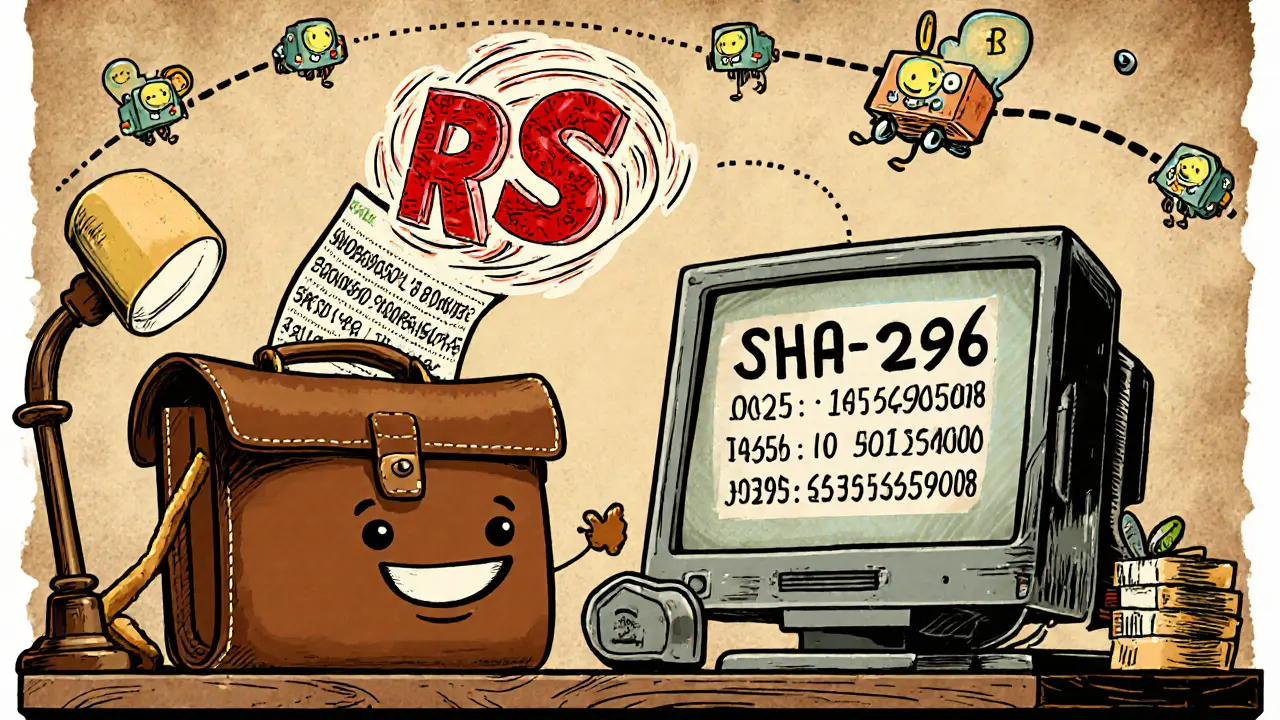Quick Takeaways
- Digital signatures use a pair of mathematically linked keys to prove who sent a crypto transaction.
- They guarantee authentication, integrity, and non‑repudiation without revealing the private key.
- Bitcoin, Ethereum and most other coins rely on ECDSA or EdDSA signatures to lock funds.
- A transaction hash, a private key, and a signing algorithm create a unique signature that anyone can verify with the public key.
- Keeping the private key safe is the single most critical security practice for crypto users.
What Is a Digital Signature?
In the world of crypto, a Digital Signature is a cryptographic seal that proves a message-or a transaction-originated from the holder of a specific private key and that the message wasn’t altered after signing.
Think of it as an electronic version of a handwritten signature, but instead of ink it uses math. The seal is generated by combining the sender’s private key with a hash of the transaction data. Anyone who has the matching public key can run a verification algorithm and be certain the data is authentic.
How Asymmetric Cryptography Powers Digital Signatures
At the heart of every digital signature lies Public Key and Private Key. These keys are mathematically linked: the private key can create a signature, while the public key can only verify it.
- Private Key: A 256‑bit (or longer) secret known only to the owner. It never leaves the wallet.
- Public Key: Derived from the private key through a one‑way function. It’s shared openly and forms part of the user’s blockchain address.
Because the relationship is one‑directional, an attacker can’t reverse‑engineer the private key from the public key, making the system resilient against forgery.

Core Security Properties Delivered by Digital Signatures
Three pillars make digital signatures indispensable for crypto:
- Authentication: The network knows exactly who signed the transaction.
- Integrity: Any change to the signed data-amount, recipient, or fee-breaks the signature.
- Non‑repudiation: The signer cannot later deny having sent the transaction, because the private key uniquely created the seal.
These properties replace the need for banks or other middlemen to verify who owns the funds.
Digital Signature Workflow in Bitcoin
Bitcoin is the canonical example. Here’s a step‑by‑step look at how a wallet turns a user’s intent into a verifiable signature:
- Transaction Creation: The wallet builds a transaction object that includes inputs (UTXOs), outputs (addresses and amounts), and a small fee.
- Hashing: The entire transaction is passed through SHA‑256 twice, producing a transaction hash. This hash acts as a unique fingerprint.
- Signing: The wallet feeds the hash and the user’s Private Key into the ECDSA signing algorithm. The output is a pair of numbers (r, s) that together form the signature.
- Broadcast: The signed transaction-original data plus the signature-is sent to the Bitcoin network.
- Verification: Every node extracts the sender’s Public Key (derived from the sender’s address) and runs the verification algorithm on the hash and signature. If the math checks out, the transaction is accepted into the mempool and later into a block.
If an attacker tries to tweak the amount or the recipient after the signature is attached, the hash changes, the signature no longer matches, and the network rejects the transaction outright.
Algorithms and Standards Behind Crypto Signatures
Different blockchains adopt different signature schemes based on performance, security, and size. Below is a quick comparison of the most common algorithms.
| Algorithm | Key Size (bits) | Signature Size (bytes) | Typical Use Cases |
|---|---|---|---|
| ECDSA (secp256k1) | 256 | ~64 | Bitcoin, Litecoin |
| EdDSA (ed25519) | 256 | ~64 | Monero, newer Ethereum contracts |
| RSA (2048) | 2048 | ~256 | Legacy systems, some private blockchains |
Most modern public chains favor elliptic‑curve schemes (ECDSA, EdDSA) because they offer strong security with compact signatures, which saves on block space and reduces fees.

Where Certificates Fit In
While pure crypto transactions don’t rely on a certificate authority (CA), many enterprise blockchains use Certificate Authority issued public‑key certificates to bind a public key to an organization’s identity. The certificate contains:
- Owner’s name or legal entity
- Public key
- Expiration date
- CA’s digital signature
Common Pitfalls & Best Practices
- Never expose your private key. Store it in a hardware wallet or an encrypted seed phrase.
- Use strong, unique passwords for any software wallet and enable multi‑factor authentication.
- Regularly back up your seed phrase offline; losing it means losing access to all signed assets.
- Beware of malware that can hijack the signing process. Verify the wallet’s checksum before installation.
- When developing smart contracts, test signature verification on a testnet before mainnet deployment.
Following these habits keeps the private key truly private, which is the cornerstone of a trustworthy digital‑signature system.
Frequently Asked Questions
How does a digital signature differ from a regular password?
A password proves knowledge at login time, but it isn’t tied to a specific transaction. A digital signature binds a cryptographic proof to the exact data being sent, ensuring both authenticity and integrity for that single operation.
Can I reuse the same digital signature for multiple transactions?
No. Each signature is generated from the hash of a specific transaction. Changing any field-even a single satoshi-produces a new hash, which requires a new signature.
What happens if my private key is leaked?
Anyone with the private key can create valid signatures, effectively stealing control of all funds tied to that key. Immediate action includes moving assets to a fresh address with a new key pair.
Do all cryptocurrencies use the same signing algorithm?
No. Bitcoin uses ECDSA on the secp256k1 curve, while newer chains like Solana adopt Ed25519, and some private blockchains still rely on RSA. The choice balances security, speed, and signature size.
Are digital signatures legally binding?
In many jurisdictions, including the United States and the EU, qualified electronic signatures-often backed by a certificate authority-have the same legal weight as handwritten signatures. In the crypto context, the signature is universally accepted by the protocol, even if it isn’t a “legal” document.

